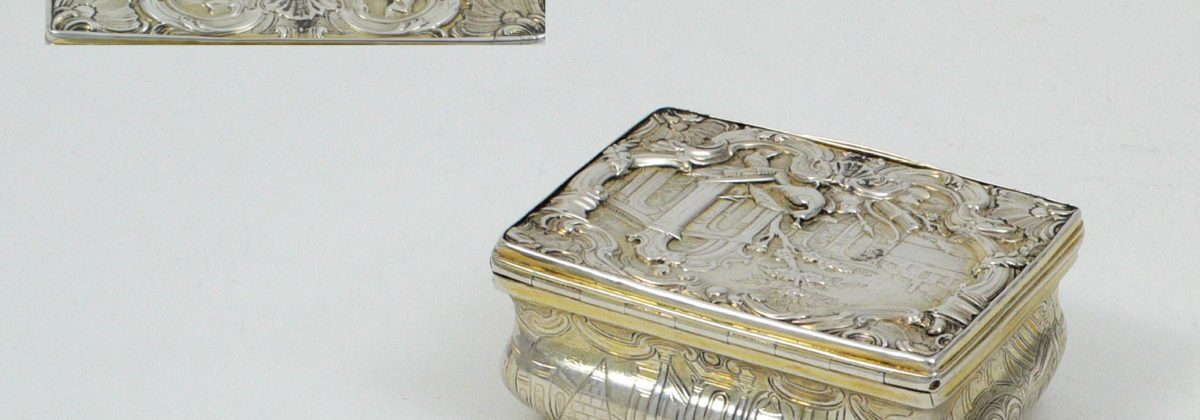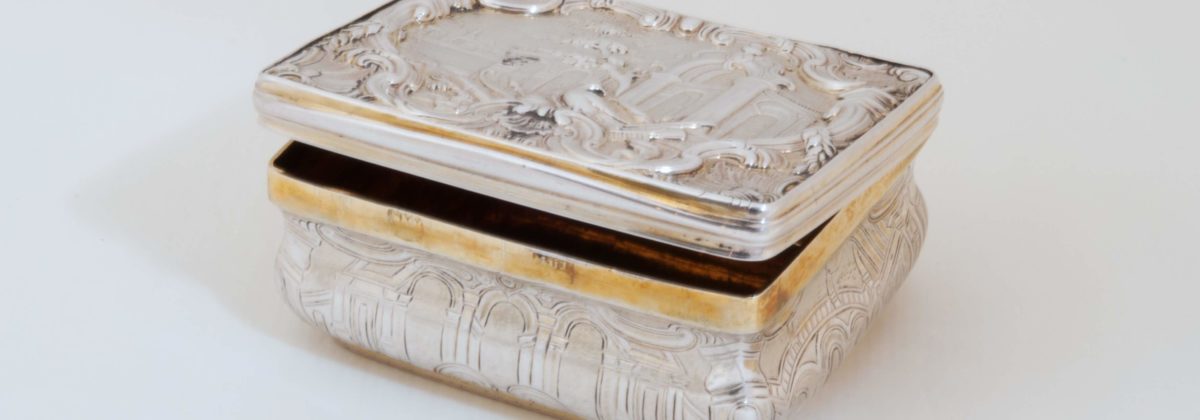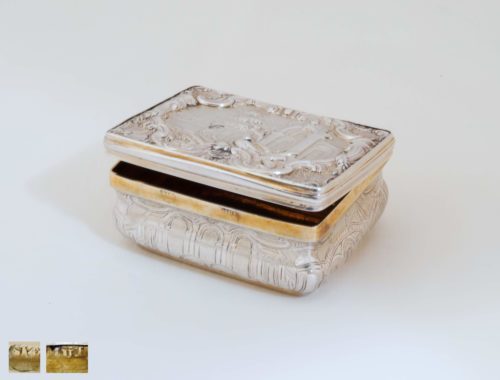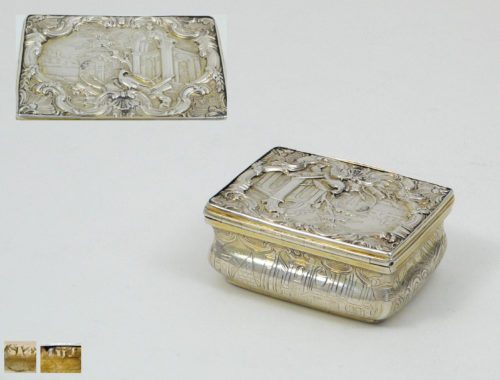Detailed Information
Snuff Box (Tabatière) with architectural settings, Silver, partly gilt
This silver partly-gilt snuff box, made in Potsdam, has a rectangular form and shows typical Rococo ornamentation. The body is decorated on all sides with architectural settings, possibly depicting parts of the Sanssouci palace in Potsdam, and has rounded edges. The hinged lid is adorned with a plaquette laid on it. This is very laboriously adorned: in a rococo frame made out of shells and rocailles, there is the depiction of a built environment. This shows most probably the Communs, at the New Palace (Potsdam), executed in wonderful embossing and chiseling. In the front, hunting trophies with a peacock. The snuff box is marked on the rim of the corpus.
Snuff Boxes during the Frederician Period
In the early eighteenth century, French snuff boxes (tabatières) made of gold and enamel or of other precious materials, were quite fashionably in Germany. These were mostly used for the storage of snuff tobacco, but also of powder, pills and bonbons.
The ascent to power of Frederick the Great (1712-86) meant on the same time a great development for the crafts and a restriction to the import of luxurious products from France. The goal was to encourage the local production of such goods. Frederick was himself a great collector and user of such snuff boxes, exactly like Heinrich von Brühl (1700-63), the head of the Meissen Porcelain Manufactory.
During the eighteenth-century snuff became not only an interesting source of income for the state (through taxes), but its use was also an important and refined social ritual. For this purpose, appropriate accessories were developed very quickly, which supported the status and taste of snuff users. Against this background, goldsmiths and other artists showed their craftsmanship and art in an imaginative way.
Snuffboxes were made of different materials. Tabatières were therefore treasures of the gallant world and therefore at the same time a valuable investment. Golden boxes – often decorated with precious stones – were given as a gift to officers by Frederick the Great.
Literature
Koch, Christina Ute, ‚Die Tabatièren Friedrichs II.‘, S. 116-127 In: Völkle, Michaela (bearb. von), Kronschatz und Silberkammer der Hohenzollern, Deutscher Kunstverlag GmbH: Berlin, München, 2010.





